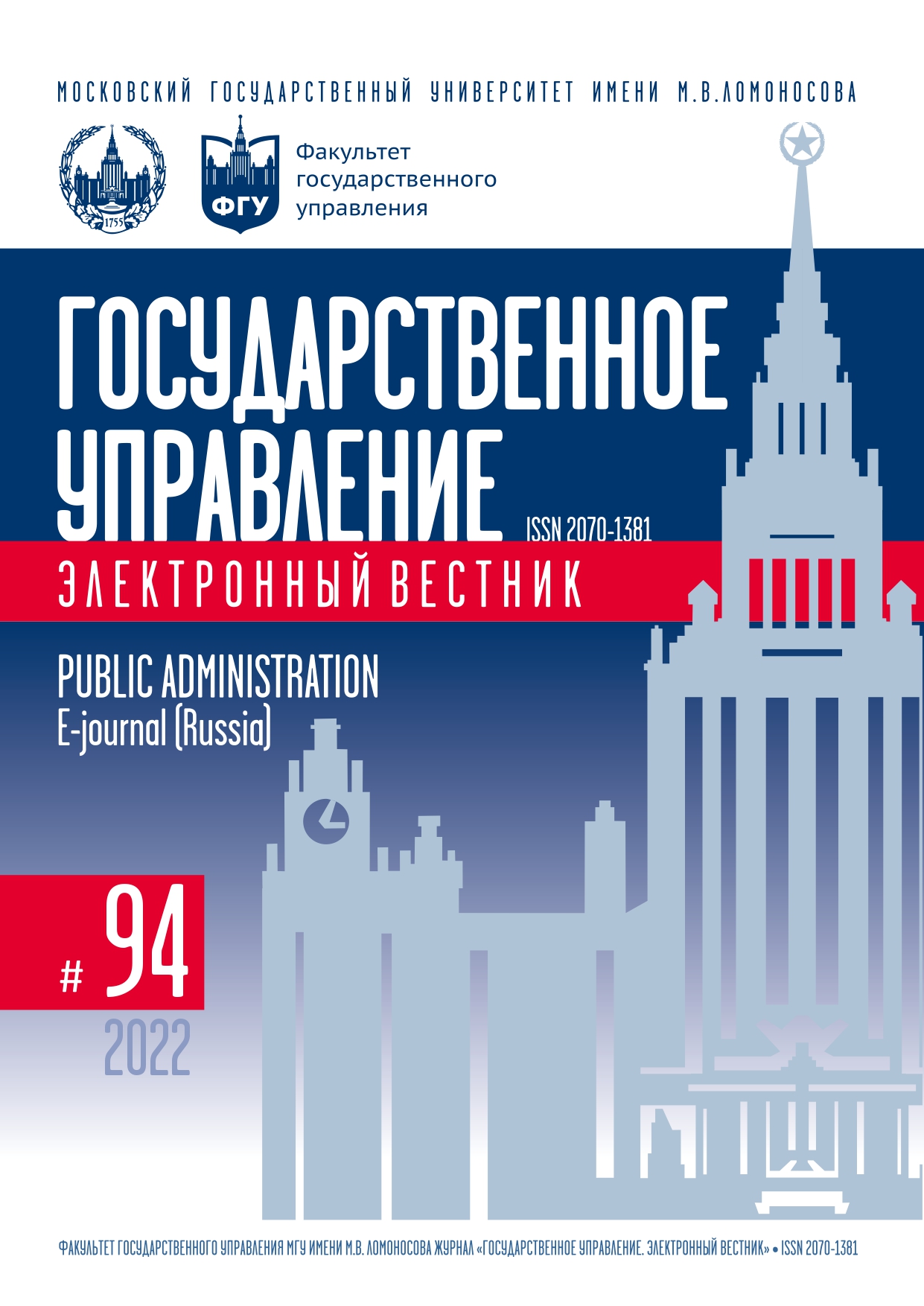Агент-ориентированная демографическая модель Дальнего Востока как инструмент поддержки принятия управленческих решений
Ключевые слова:
Агент-ориентированное моделирование, искусственное общество, стратегическое планирование, демографический прогноз, региональное управление, Дальний ВостокАннотация
Научная обоснованность — одно из ключевых требований к документам стратегического планирования, закрепленное на уровне федерального законодательства. Обеспечение научной обоснованности требует разработки и внедрения в систему государственного и муниципального управления специального инструментария, способного предоставлять лицам, принимающим решения, как информацию о текущем состоянии объекта управления, так и сценарные прогнозы его развития с учетом различных вариантов управленческих воздействий. Выбор инструментария прогнозирования не регламентируется законодательно и осуществляется органами власти самостоятельно, что приводит к несогласованности прогнозов различного уровня и ставит под сомнение достижимость целевых показателей. Применение агент-ориентированных моделей в качестве инструмента поддержки принятия решений позволяет апробировать управленческие решения на искусственном обществе и прогнозировать социально-экономическую динамику комплексно, одновременно на всех уровнях управления: от индивида до региона, округа, страны. Целью данной статьи является характеристика функциональных возможностей агент-ориентированной демографической модели Дальнего Востока, разработанной в ФАНУ «Востокгосплан», для использования органами управления разного уровня. Для достижения поставленной цели в статье раскрывается концептуальная схема агент-ориентированной модели, описываются особенности ее программной реализации, обосновываются экзогенно управляемые параметры и представляются соответствующие им интерактивные элементы управления, формирующие пользовательский интерфейс модели. Результаты моделирования могут быть использованы при составлении документов стратегического планирования и программ развития региона, в частности для разработки прогноза численности населения региона, прогноза баланса трудовых ресурсов, прогноза социально-экономического развития, планирования мероприятий по созданию рабочих мест и других мероприятий государственных и региональных программ по содействию занятости. Данный инструмент может быть применен также для проведения сценарных экспериментов и обоснования экономической эффективности регулирующего воздействия.
Библиографические ссылки
Кириенко В.Е. Вызовы и возможности при создании и применении систем поддержки принятия решений // Проблемы управления в социальных системах. 2013. Т. 6. № 9. С. 6-16.
Лычкина Н.Н. Имитационное моделирование стратегического развития социально-экономических систем: поиск эффективных модельных конструкций // Труды Седьмой Всероссийской научно-практической конференции «Имитационное моделирование. Теория и практика» (ИММОД-2015). М.: [б.и.], 2015. Т. 2. С. 168–173.
Макаров В.Л., Бахтизин А.Р., Сушко Е.Д. Агент-ориентированные модели как инструмент апробации управленческих решений // Управленческое консультирование. 2016. № 12. C. 16–25.
Россошанская Е.А. Возможности и перспективы применения агент-ориентированных моделей в управлении воспроизводством трудового потенциала на муниципальном уровне // Государственное управление. Электронный вестник. 2019. № 73. С. 249–266. DOI: 10.24411/2070-1381-2019-00039
Чекмарева Е.А. Агент-ориентированные модели в муниципальном управлении // Проблемы развития территории. 2017. № 6(92). С. 121-135.
Axtell R. Why Agents? On the Varied Motivations for Agent Computing in the Social Sciences // Center on Social and Economic Dynamics (CSED). 2000. Working Paper No. 17. URL: https://www.researchgate.net/publication/228718823_Why_Agents_On_the_Varied_Motivations_
for_Agent_Computing_in_the_Social_Sciences
Bonabeau E. Agent-Based Modeling: Methods and Techniques for Simulating Human Systems // PNAS. 2002. Vol. 99. Is. suppl_3. P. 7280–7287. DOI: 10.1073/pnas.082080899
Chesney T., Gold S., Trautrims A. Agent Based Modelling as a Decision Support System for Shadow Accounting // Decision Support Systems. 2017. Vol. 95. P. 110–116. DOI: 10.1016/j.dss.2017.01.004
Furtado B.A. Eberhardt I.D.R. A Simple Agent-Based Spatial Model of the Economy: Tools for Policy // Journal of Artificial Societies and Social Simulation. 2016. Vol. 19. Is. 4. DOI: 10.18564/jasss.3071
Matsatsinis N.F., Delias P. Implementing an Agent-based Decision Support System for Task Allocation: A Multi-Criteria Approach // Proceedings of the 9th Panhellenic Conference in Informatics — PCI 2003 (Thessaloniki, November 21–23, 2003). Berlin: Springer, 2003. P. 128–141.
Quindt J., Reetz E., Kukuck V., Tönjes R., Westerkamp C. Agent Based Decision Support System for Optimizing Logistical Processes in Agricultural Production // 9th IEEE International Conference on Industrial Informatics. Lisbon: IEEE, 2011. P. 27–32. DOI: 10.1109/INDIN.2011.6034831
Salem H., Attiya G., El-Fishawy N. A Survey of Multi-Agent based Intelligent Decision Support System for Medical Classification Problems // International Journal of Computer Applications. 2015. Vol. 123. Is. 10. P. 20–25.
Turban E., Aronson J.E., Liang T-P. Decision Support Systems and Intelligent Systems. Upper Saddle River, N.J.: Prentice Hall, 1998.
Yu Zh., Rouse W., Serban N., Veral E. A Data-Rich Agent-Based Decision Support Model for Hospital Consolidation // Journal of Enterprise Transformation. 2016. Vol. 6. Is. 3–4. P. 136–161. DOI: 10.1080/19488289.2016.1248802
Zeebaree M., Aqel M. A Comparison Study between Intelligent Decision Support Systems and Decision Support Systems // The ISC Int’l Journal of Information Security. 2019. Vol. 11. Is. 3. P. 187–194. DOI: 10.22042/isecure.2019.11.3.25

